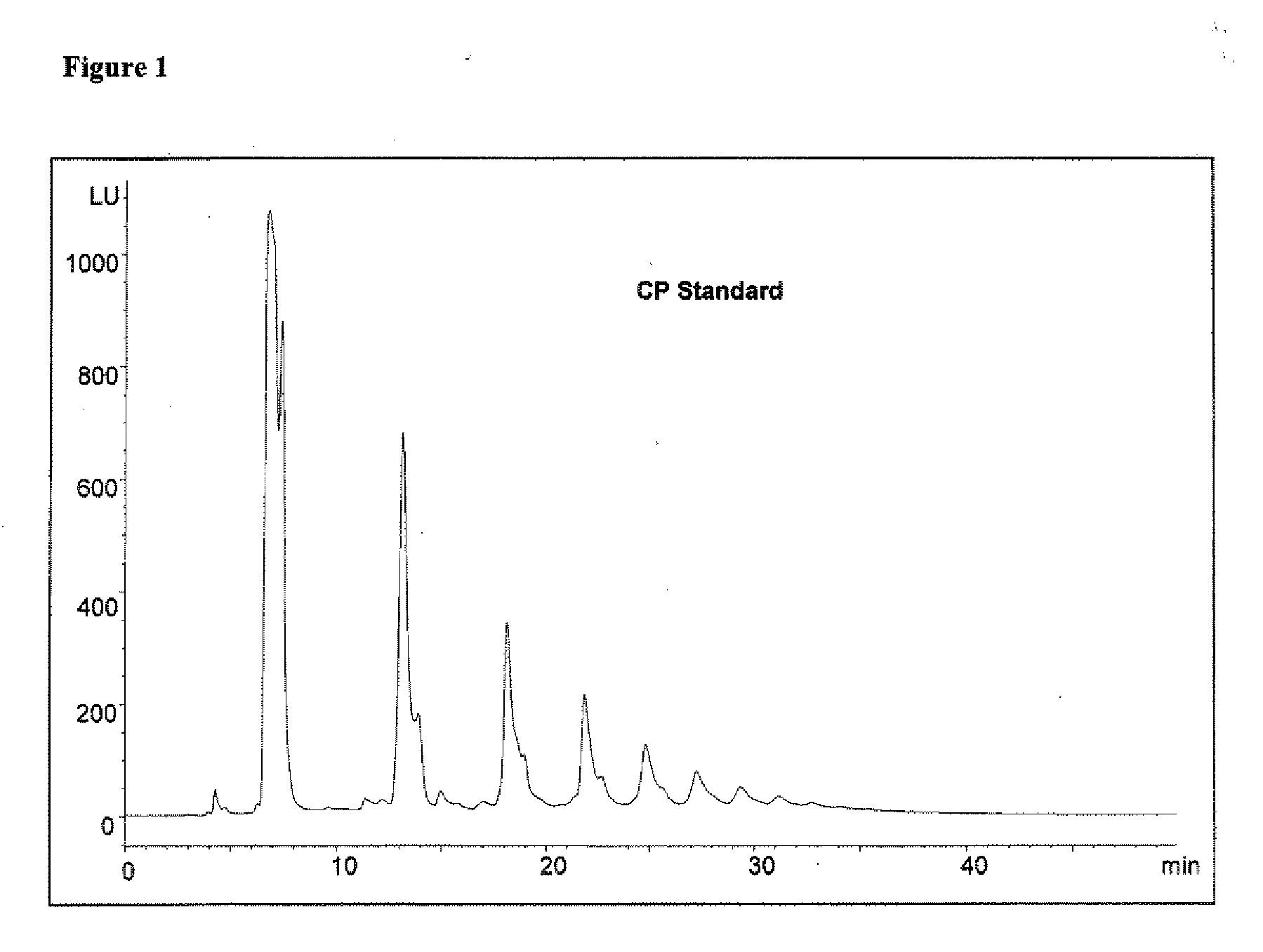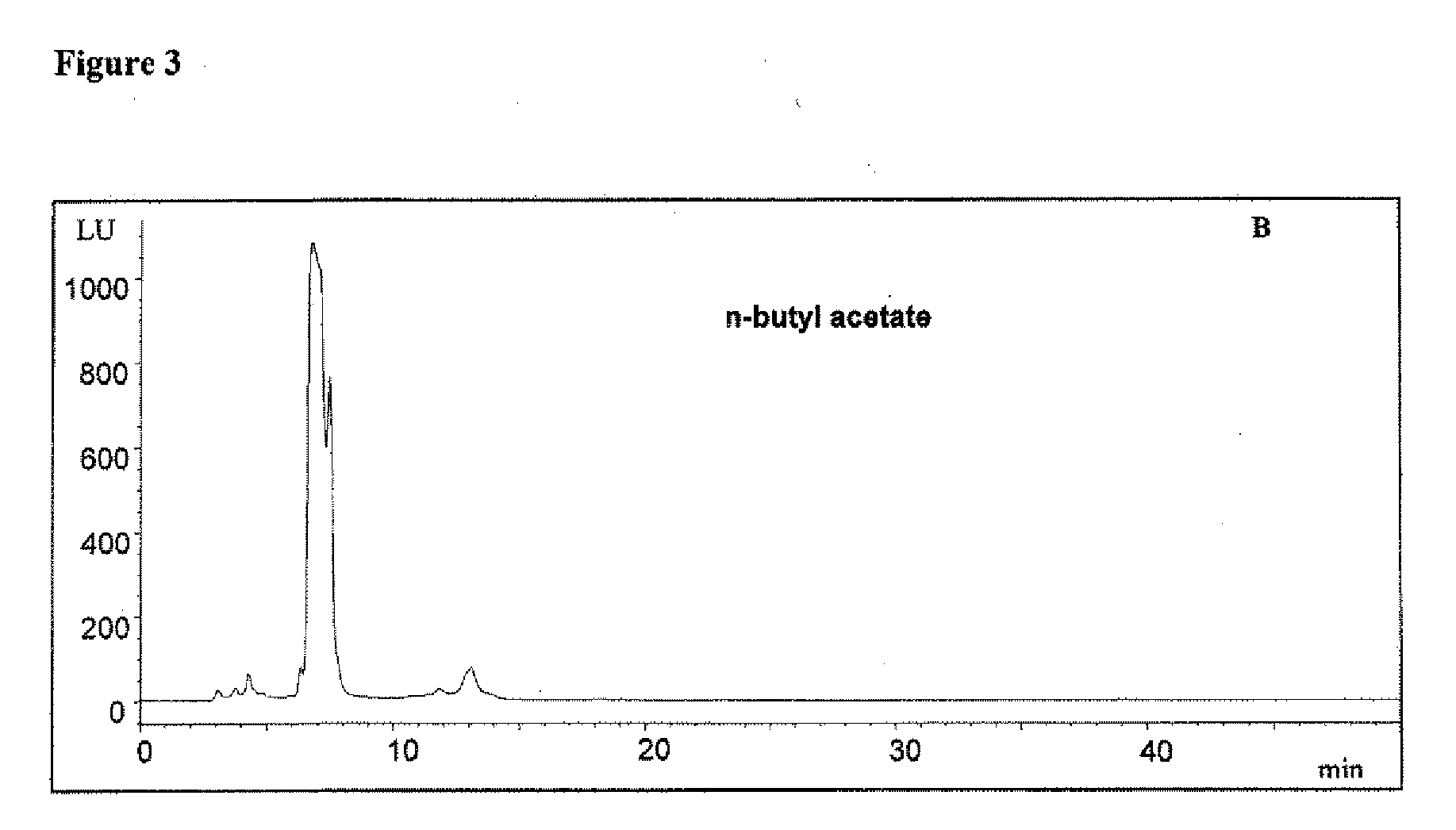Process for selectively extracting procyanidins
a procyanidin and selective extraction technology, applied in the field of selective extraction of procyanidins, can solve the problem of limiting the maximum loading capacity to approximately 400 mg
- Summary
- Abstract
- Description
- Claims
- Application Information
AI Technical Summary
Benefits of technology
Problems solved by technology
Method used
Image
Examples
example 1
[0062]Initial extraction: n-butyl acetate: An aqueous mixture of cocoa polyphenols (catechin, epicatechin, and procyanidin dimers and higher oligomers) may be extracted with n-butyl acetate. The resulting n-butyl phase is enriched in catechin and epicatechin, along with minor amounts of procyanidin dimers, and the resulting aqueous phase is enriched in procyanidin dimers and higher oligomers. Compare FIGS. 1 and 3.
example 1.1
[0063]Second extraction: diethyl ether: The aqueous phase enriched in procyanidin dimers and higher oligomers (Example 1) may be extracted with diethyl ether to provide an organic (diethyl ether) phase enriched in procyanidin dimers and an aqueous phase enriched in procyanidin trimers and higher oligomers.
example 1.1.1
[0064]Third extraction: ethyl acetate: The aqueous phase enriched in procyanidin trimers and higher oligomers (Example 1.1) may be extracted in ethyl acetate. The resulting ethyl acetate phase will be enriched in procyanidin trimers and tetramers while the resulting aqueous phase is enriched in procyanidin pentamers and higher oligomers.
PUM
 Login to View More
Login to View More Abstract
Description
Claims
Application Information
 Login to View More
Login to View More - R&D
- Intellectual Property
- Life Sciences
- Materials
- Tech Scout
- Unparalleled Data Quality
- Higher Quality Content
- 60% Fewer Hallucinations
Browse by: Latest US Patents, China's latest patents, Technical Efficacy Thesaurus, Application Domain, Technology Topic, Popular Technical Reports.
© 2025 PatSnap. All rights reserved.Legal|Privacy policy|Modern Slavery Act Transparency Statement|Sitemap|About US| Contact US: help@patsnap.com



